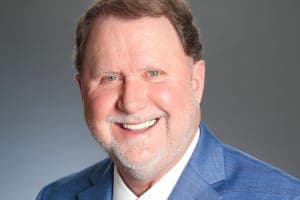This editorial originally ran in the July-August 2025 edition of James.
Picture a bright Monday morning in Georgia—Rome, Americus, Decatur, Waycross, or your own hometown. As activity picks up on Main Street, a police car passes newly renovated lofts wired for high-speed broadband, and people drop by a coffee shop in a building that once sat vacant. Every element of that scene—public safety, broadband, adaptive reuse—came from a decision made in city hall. Those local choices power Georgia’s promise.
Cities occupy just 9 percent of our state’s land area, yet house 45 percent of Georgians. They generate 91 percent of the state’s GDP and account for 70 percent of our jobs. Their daytime populations increase by 24 percent as people commute in for work or visit for shopping and services. Like residents, these visitors rely on city water, sewer, fire and police services. In short, cities are the engines that keep Georgia growing.
It’s in cities where a fourth-generation store owner and a first-generation tech worker cheer the same band at the local festival. That mix is possible because 48 percent of Georgia’s housing units and three-quarters of its multifamily homes are in cities, offering everything from lofts to historic bungalows. No wonder corporate recruiters sell that quality of life to companies deciding whether to build here or in Tennessee, Texas, or Nevada.
That engine runs because local voters invest. Since 2001 they have approved 95 percent of Special Purpose Local Option Sales (SPLOST) tax referenda, making investments in projects they can see and touch; streets repaved, parks upgraded, infrastructure and technology modernized. In just the last five years, city residents have approved more than $10 billion in local capital projects. Local decision making, transparent project lists, and funding sunsets make these investment models of fiscal stewardship.
Even the best-tuned engine needs fuel, though. Georgia’s cities have identified $33 billion in capital needs between now and 2029: $10.3 billion for water and sewer alone, with another $9.7 billion for transportation. These are not wish-lists. They are the backbone of clean water, industrial recruitment, and safe travel across Georgia, from Bainbridge to Blue Ridge.
Population growth, rising construction costs, compliance with state and federal regulations, and normal repair and replacement are fueling these needs. Meanwhile, 62 percent of tax‑exempt property—hospitals, government and educational facilities, houses of worship—are in cities. This further constrains local revenue. Small cities, the 73 percent of municipalities with fewer than five thousand residents and a limited tax base, feel the squeeze the most.
Yet every dollar invested locally returns multiples in economic and quality of life benefits. In Douglas, $3 million in federal and local funds is extending natural-gas, water, and sewer into a business park, unlocking $45 million in private investment and new jobs. Valdosta invested $2.9 million in local funds to create Unity Park downtown, featuring an amphitheater and other amenities. Savannah has directed more than $700 million in SPLOST revenue for street and drainage needs, to rebuild playgrounds and athletic fields, and to refurbish River Street; improvements that reduce storm‑flood losses and keep the city’s tourism economy flourishing.
State policy can accelerate local momentum through three practical steps:
- Protect local revenue tools and decision making. Local revenue options and decision-making have earned voter trust. Keep those tools flexible, and resist state pre-emptions that simply increase costs and risks for city taxpayers.
- Expand the Rural Workforce Housing Partnership Fund. Build on the $120 million the General Assembly has already invested, committing additional recurring state dollars so city leaders can tailor workforce housing solutions to their cities’ unique needs.
- Reinforce and expand state–local infrastructure partnerships. Growing proven programs—Local Maintenance and Improvement Grants (LMIG) and Local Road Assistance Administration (LRA) funding, GEFA gas and water/sewer loans, and the DCA Downtown Revolving Loan Fund—can assist cities in generating increased private investment that boosts jobs, revenues, and Georgia’s overall economy.
Each proposal honors local decision-making and return on investment, thereby growing the base.
Georgia sits at an inflection point. Freight volumes through our ports are climbing, film and technology clusters are expanding, and advanced manufacturing is chasing reliable infrastructure and livable communities. Without strong cities, those opportunities will land elsewhere, taking tomorrow’s payrolls with them.
Now picture Friday afternoon. Kids splash at the city pool, neighbors gather downtown for a free concert, and a line forms outside a new restaurant launched with help from the downtown development authority. Scenes like this unfold every day in 537 cities across the state. Let’s keep them rising.
I invite lawmakers, business leaders, and readers of JAMES to partner with your hometowns. When Georgia’s cities rise, the whole state soars.

